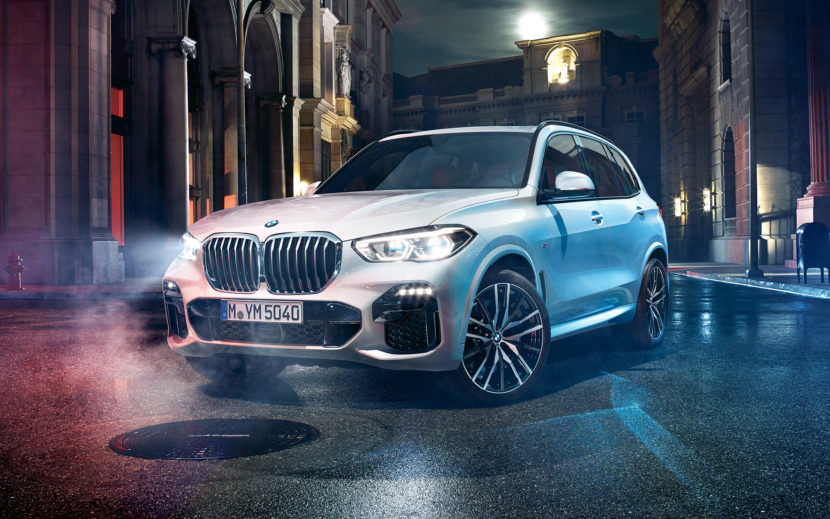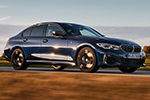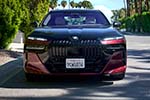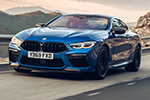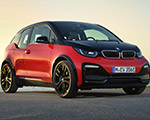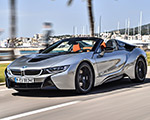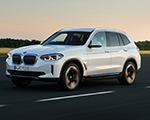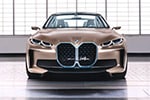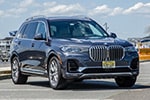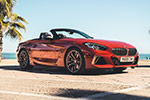The BMW X5 has been in production since the early 2000s. It’s the first SUV the brand brought to market, and wasn’t immediately a critical success. That tune has changed through the truck’s quarter-century run, as the brand got better acquainted with building SUVs and customer expectations. In fact, the BMW X5 is consistently one of the brand’s top performers. In 2024, the X5 and its sportier twin the X6 sold 275,318 units combined. That’s more than 10 percent of the brand’s total global sales. As the X5 ages and depreciates, it becomes an even more exciting prospect for shoppers trying to ostensibly get the most for their money. Let’s just say some generations are a safer bet than others.
First Generation BMW X5 (E53)
The first generation of the BMW X5, the E53, was in production between 2000 and 2006. All E53 X5s are all-wheel drive. The US market only saw naturally aspirated gas engines in inline-six and V8 configuration, and the M54 inline-six is the one you want for long-term durability. The M54 is a staple of the BMW lineup. While you can expect some “old BMW” problems (regularly replacing the coolant system, DISA valve, oil filter housing gasket leaks), the M54-powered X5 is certainly the most reliable of the first generation X5.
If you absolutely must have a V8 in your first-gen X5, the early M62 V8 (2000-2003 model year) is the safer bet. After 2003, BMW stuck the N62 under the hood of the 4.4i and 4.8is models. The worst of the bunch is the N62, often suffering from valve steam seal failure, leaking valve cover, timing cover, and alternator bracket gaskets, coolant leaks, and SAIS (secondary air injection system) failure. The less complicated M62 also has problems, like VANOS issues and failing timing chain guides, but they’re generally easier to plan for via preventative maintenance. We wouldn’t recommend rolling the dice on a V8 E53 unless it’s an M62.
There are a number of other persistent issues that hold the E53 back from being considered one of the more reliable ways to pilot an X5. Since they’re all all-wheel drive, there’s inherently a little bit more complexity than a two-wheel drive version. All V8 models (and many inline-six powered models) have some form of early air suspension/self-leveling suspension (SLS), which can be a troubleshooting nightmare. Pick up an M54-powered E53 with a stick shift for added novelty and the most reliable experience possible (generally).
Second Generation BMW X5 (E70)
The second generation of the BMW X5, the E70, was produced from 2007 until 2013. Like its predecessor, E70s are available only in all-wheel drive, but the US market finally gets to enjoy a diesel engine. The diesel we got is dubbed the M57, and it’s a fairly stout mill — as long as you’re willing to shell out thousands of dollars to keep the emissions control systems running smoothly. There are ways around the system, of course, but you’ll need to find those discussions elsewhere.
If you’re sticking with gas power, there’s good news. The E70 got a ton of great engines throughout its life cycle, including the excellent N52 inline-six, the last naturally aspirated six from BMW. These 3.0-liter mills are successors to the M54-powered X5s, and they largely carry on the tradition of resilience. Another excellent inline-six available to E70 shoppers is the N55. Essentially, you can trade peace of mind for a considerable power bump. The N55 in the E70 makes just over 300 horsepower and 295 pound-feet of torque. But it’s not without flaws: charge pipe failure is a near guarantee, and over a long enough timeline you’ll likely need to confront issues surrounding the high-pressure fuel pump (HPFP), oil filter housing gasket, and cooling system (particularly the water pump).
Three different V8 engines show up under the hood of the second-gen X5: earlier 4.8i/xDrive48i models got an N62, while later E70 trucks got an updated N63 power plant. Then there’s the first-ever X5 M, which utilized an S63. We’ll again recommend you stay away from N62-powered models. The N63 and S63 introduce turbocharging, which is a portion of why we can’t possibly recommend the N63-powered X5 as a reliable pick.
Failing turbos, high oil consumption, and (yet again) failing valve steam seals make the N63 just as much of a headache as the N62. The S63, on the other hand, at least gets rid of the turbocharger issues, and is generally viewed as more reliable. When it comes to the second gen X5, we’re extremists: stick to a basic N52-powered car or full send on the S63-powered X5 M; there are better options elsewhere in the X5 lineage for middle-grounders.
Third Generation BMW X5 (F15 and F85)
The third generation of the BMW X5 was produced from 2013 until just 2018. Despite the short run, there are a dizzying number of options to choose from. Along with gas inline-six and V8 options (both turbocharged), BMW continued to offer a diesel and even introduced a plug-in hybrid 40e variant. The F85 chassis code identifies the second-ever X5 M which was based heavily on the standard F15 chassis. The diesel is upgraded to the N57 unit and is similar to the M57 in the sense that reliability is contingent upon maintaining or discarding the emissions control system. We don’t recommend it unless you have either of those options at your disposal.
The hybrid X5 xDrive40e is enticing, as the PHEV depreciation curve is steep, and you could save a little bit on gas. However, there are some pitfalls. While the N20 engine is fairly reliable in this application, parts for the electrical components are still expensive and labor-intensive. It isn’t a terribly easy model to research, either. At the very least, a good warranty is advised. The N55 is largely a carryover engine from the previous generation. However, the N63 V8 saw a significantly updated N63 (“N63TU”) that drove up performance figures and significantly changed how the engine performs. A litany of new parts make it actually worthy of consideration here; although failing turbos and valve stem seals persist. The X5 M (dubbed F85 here) uses a further updated S63, too, the S63B44T2. Though, practically, little changes — it’s still a good pick overall.
Overall, the third generation BMW X5 has a lot going for it in terms of reliability. When you further consider an available rear-wheel drive configuration (N55-powered cars only), further reducing the number of things you can break, it looks like a compelling choice. And, in fact, we think it is: purchasing a third-gen X5 is about as safe of a bet as you can get, particularly if you don’t have the money for a new one. Notably, it’s also the first generation not completely affected by the dreaded Takata airbag recall (affected model years cut off at 2014).
Fourth Generation BMW X5 (G05 and F95)
The most current X5 generation is also the most reliable. The star of the show is the B58 inline-six, available I the X5 xDrive40/sDrive40 models. Not only is the B58 proving to be more reliable overall than its N55 predecessors, the inline-six has also showed up in literally millions of BMW vehicles, making parts plentiful and research easy. A rear-driven B58 G05 X5 will take you very far, and we have no reservations about recommending it as the most reliable X5 you can buy. The N63 returns with even more substantial changes that make it, too, the most reliable iteration yet; of course, as some may already know, late V8 models (X5 M60i) ditch the N63 entirely in favor of an S68 lifted straight out of the M models. Unfortunately the S68 is a little bit too new to have concrete data points; we imagine it will be quite stout, but the integrated mild hybrid components might make repairs expensive.
As the PHEV models in this generation rely on a B58 instead of the old four-cylinder, they continue to be an attractive prospect. While early reports tend to skew reliable, we’d tread carefully: battery components are expensive to replace and finding someone other than the dealer willing to work on it might be tricky depending on where you live. The F95 X5 M uses either the S63 (2020-2023) or S68 (2024+) engine, both of which we’ve covered elsewhere at this point.
Which BMW X5 Generation is the Most Reliable?
Generally, the newest X5 you can afford is the most reliable. We think the second-generation X5 is on average the least safe bet, although it’s very close between the first and second generation. The nice thing about X5 reliability, overall, is that issues are mostly confined to what’s under the hood. Interior quality and even iDrive components seem to have a low failure rate across the board, although older models will likely still benefit from a window regulator checkup before buying. Ultimately, any BMW X5 can be a dependable vehicle with proper maintenance and a thorough inspection before purchase, especially when opting for one with a strong service history. Hold out for a good one and you won’t be disappointed.






